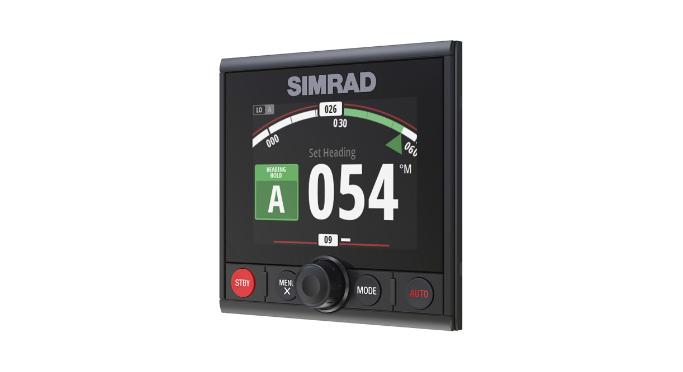Teaching your autopilot to steer.
How understanding three essential functions should be adjusted to create the perfect pilot
It’s easy to assume that an autopilot merely responds to the angle the compass is feeding it. In simple terms, this is broadly the case when the vessel is heading in a straight course. But while the process of turning to a new heading is a press of the button for the operator, behind the scenes, it’s a more complicated process for the autopilot’s control system.

For the autopilot’s brain to drive the steering ram, three underlying functions need to come into play. And while it is not necessary to go into great detail, understanding the basics of these functions makes it much easier to get to grips with how you can tune an autopilot to get it to behave the way you want it.
The three functions that control the amount of rudder angle and delivery to the autopilot ram are known as P, I and D.
Proportional (P)
Integral (I)
Derivative (D)
In practical terms, these relate to the following operations:
Rudder Gain – (P)
This changes the amount of rudder angle used to move onto the new course as well as controlling how quickly the angle is applied. Turning the gain up means the autopilot responds rapidly and aggressively to any request and is the primary function to ensure the autopilot is responding appropriately for the current conditions.
If you compare this to the steering of a car, when you’re travelling fast you will usually want a smaller amount of angle gently applied to the wheels when changing direction than when travelling slowly. The amount and speed that you move the wheel is the equivalent of gain. The same is true for your autopilot.
“As an example, if you instruct a 20-degree course change, you want the autopilot to initiate the turn reasonably fast. If it’s dragging on and not doing anything while you’re only getting impatient, then your P factor is too low,” says Product Manager Eirik Hovland.
Auto Trim – (I)
This function ‘learns’ how much rudder angle to apply to achieve a steady heading. Changing Auto Trim adjusts the speed at which the autopilot learns to counter the force trying to move the boat off course. One example is the effect of propwalk, which attempts to drag the stern of a boat in one direction as a result of the rotation of the propellor.
As the propellor speed varies, so too will the amount of propwalk the autopilot has to account for. Auto Trim adjusts for this.
To assess and adjust Auto Trim, with the autopilot off, set the boat up on a constant heading. Switch the autopilot on and wait to see if the heading remains the same. Now change the engine revs and see if the heading changes and whether the autopilot compensates.
If the autopilot doesn’t compensate fast enough, you need to reduce the Auto Trim to allow it to learn more quickly.
“On the other hand, when you’re rolling out on a new heading if your gain is too high then the boat will overshoot, which in turn may mean that it will start oscillating. So, in assessing how the autopilot is behaving, you need to keep control of the situation by making sure that you start at slow speeds and with plenty of space around you.”
Counter Rudder (D)
Counter rudder is the function that applies rudder in the opposite direction to stop the boat overshooting the required heading.
To check this function, set up the boat under engine and note the angle at which you have started and where you want the pilot to steer. Then, put in some large course changes of say 20-30 degrees at a time. From this, you will be able to see whether the pilot is over or undershooting.
If it overshoots – increase Counter Rudder.
If it undershoots – decrease Counter Rudder.
“Getting Counter Rudder set up correctly is also important in getting the pilot to handle waves,” says Eirik. “This is the function that counteracts any fast changes in your heading. So, when a wave throws you off course, then it is counter rudder that reacts and takes care of it.”
Tuning the pilot across a range of speeds is also important as Simrad® product expert Tonnes Haavarsen explains.
“If you have a high-speed vessel, it is important to ensure that the pilot behaves correctly at speed, but to do this you must make sure that there is no one around you and that you do the checking and adjustments in stages. Work up from a slow speed first.”
“There is an auto-tuning function for gain and counter rudder,” continues Tonnes. “When you activate this function, it will take the boat through a series of S-turns which will take approximately 2-3 minutes. You need space to do this without other boats around you. This automatic tuning function will calculate your Gain and Counter Rudder settings, and it’s a good starting point for many people.”
















